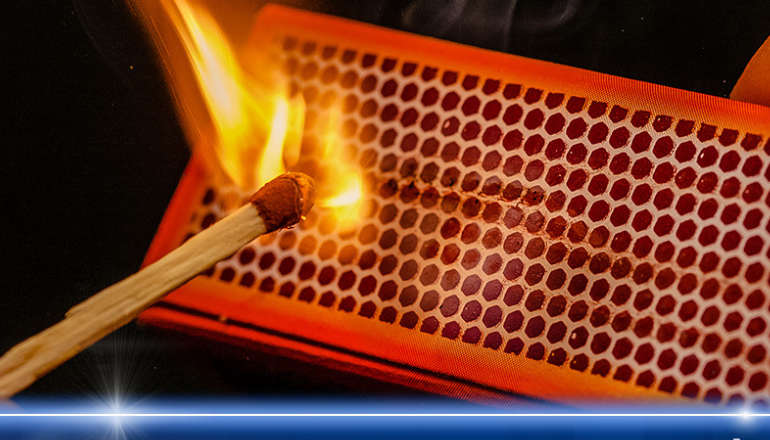
Small pieces of the flint that makes up Lewes's Norman castle gateway have been falling from the structure.
The combined roadway and footpath through the 12th century gateway and its adjacent 14th century barbican was closed on Thursday (February 11), to protect the public should any further flints fall to the ground.
According to the Sussex Archaeological Society, the owners and curators of Lewes Castle, recent extreme weather conditions are to blame for the damage.
The society said it's taking "all necessary precautions", and is working with East Sussex Fire and Rescue, East Sussex Highways, the building control departments of Lewes District Council and Eastbourne Borough Council, and their conservation departments.
The joint operation is aimed at ensuring public safety.
Debbie Matthews, the Society’s Communication Officer said:
"The parts of the castle owned and cared for by The Sussex Archaeological Society are annually inspected by a third party expert and regularly by the Society’s professional staff team to ensure the safety of our visitors, staff and members of the public.”
The road through the gate and barbican, known as "Castle Gate", will remain closed until further notice, the society added.
About Lewes Castle (by the Sussex Archaeological Society)
Soon after the Norman Conquest of 1066, William de Warenne, a close supporter of William the Conqueror, began building the motte (mound) and bailey castle at Lewes.
The first Motte is the mound we now call Brack Mount and is not generally open to the public. We do not know what buildings were on it but assume there was a wooden tower of some kind inside a wooden palisade. The site was chosen because of its commanding views over the River Ouse.
By the end of the century William had built a second, larger motte, what we now call The Keep. Lewes is reportedly the only castle in England to have two mottes, one at either end of the Bailey.
At the same time as building the Keep William also enclosed the area between the two mounds, the bailey, within a wall made of rough flints. He added a large gateway as the entrance to the Castle and this still straddles Castle Gate (currently closed after flint falls).
The Castle had a dry moat, part of which is now known as the Gun Garden and is where visitors enter the Castle.
The Keep was soon topped with a Shell Keep, built of flint, which enclosed the area where William and their family had living quarters. We do not know if there were any flint walls on top of Brack Mount, but flint walls were certainly stronger than the wooden palisades, and were less vulnerable to fire.
In the thirteenth century the Castle’s defences were strengthened by the addition of angled towers, two of which remain.
In the fourteenth century the last major addition to the defences was the Barbican Gate, which is in front of the Norman gateway.
To meet changes in weaponry the Barbican has slits suitable for the firing of ordinary bows or crossbows. However, in spite of its defences the Castle has never come under serious attack. The only occasions when it did play a role in significant historical events were the Battle of Lewes in 1264 (when some of the King’s soldiers spent the night before the battle there) and the Peasants’ Revolt in 1381 (when some local people broke into the Castle, burned papers and drank £100 worth of wine).
The last Earl de Warenne died in 1347 without a male heir and the castle passed, by marriage, to the Earls of Arundel. From that time the castle was untenanted and fell into decay.
William has recently been described as ‘the second wealthiest man in Britain ever’ which accounts for his ability to afford not only Lewes Castle and other castles elsewhere but also another major building project in Lewes. William and his wife Gundrada also started the building of Lewes Priory.
Gundrada died in 1085 and William in 1087 and both were buried in the Chapter House of the Priory. The finding of their burial caskets during the building of Brighton to Lewes railway line in 1845 led directly to the founding of the Sussex Archaeological Society in 1846.
The Society leased the castle from 1850 both as a home for its growing collection of documents and artefacts and as an attraction for visitors.
In 1922 Mr ThomasStanford (later Sir Charles Thomas-Stanford) bought the castle and presented it to the Society.
The castle, the barbican and the inner gatehouse are Grade 1 listed and the mound is a Scheduled Ancient Monument.
Lewes Castle is licensed as a venue for civil wedding and civil partnership ceremonies and these take place, in the open, in the Pleasure Garden on top of the Keep and are usually followed by drinks or a reception in the Gun Garden.
More Radio's Lewes newsroom adjoins the southern motte of Lewes Castle — the northern motte adjoins local pub the Lewes Arms.


 Man Admits To Damaging Cars In Bognor
Man Admits To Damaging Cars In Bognor
 Two Men Arrested In Connection With Brighton Rape
Two Men Arrested In Connection With Brighton Rape
 Appeal Following Assault In Horsham Shop
Appeal Following Assault In Horsham Shop
 Appeal After Arson At Gym In Burgess Hill
Appeal After Arson At Gym In Burgess Hill
 Two Men Sought In Connection With Brighton Rape
Two Men Sought In Connection With Brighton Rape
 Councillors Support Baby Box Partnership With Charities
Councillors Support Baby Box Partnership With Charities
 Brighton And Hove Bus Fare Cap Bid Foiled By Cost
Brighton And Hove Bus Fare Cap Bid Foiled By Cost
 New Medical Centre Scoping Exercise Agreed By Wealden Council
New Medical Centre Scoping Exercise Agreed By Wealden Council
 'Out Of This World' Ideas Put Forward For Future Of Brighton i360
'Out Of This World' Ideas Put Forward For Future Of Brighton i360
 New Fire Engines For West Sussex
New Fire Engines For West Sussex